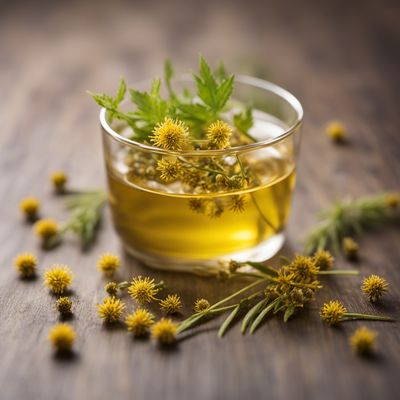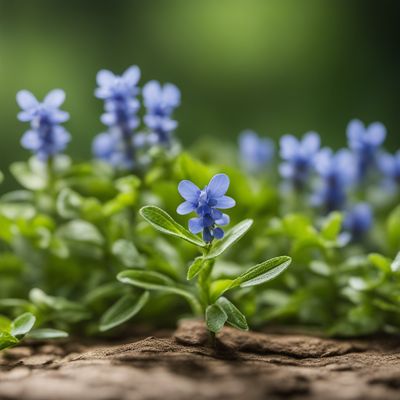
Ingredient
Bilberry infusion leaves
The Berry's Brew
Bilberry infusion leaves are thin and tender leaves obtained from the bilberry plant, a close relative of the blueberry. These leaves are commonly used to make herbal infusions, offering a unique flavor and aroma reminiscent of the bilberry fruit. When steeped in hot water, they release their essence, resulting in a soothing and refreshing beverage.
Origins and history
Bilberry infusion leaves have a long history of use in traditional medicine and culinary practices. Native to Europe, bilberries have been consumed for centuries due to their potential health benefits and distinctive taste. The leaves are often harvested and dried for later use in infusions and herbal remedies.
Nutritional information
Bilberry infusion leaves are low in calories and fat, making them a healthy choice for herbal infusions. They also contain beneficial compounds, such as antioxidants and flavonoids, which contribute to their potential health benefits.
Allergens
There are no known allergens associated with bilberry infusion leaves.
How to select
When selecting bilberry infusion leaves, look for leaves that are vibrant green in color and free from any signs of wilting or discoloration. Opt for organic leaves whenever possible to ensure a pure and natural product. Consider purchasing from reputable suppliers or specialty stores that specialize in herbal products.
Storage recommendations
To maintain the freshness and quality of bilberry infusion leaves, store them in an airtight container in a cool, dark place. Avoid exposure to moisture or direct sunlight, as it can degrade the leaves' quality. Use the leaves within a year for the best flavor and aroma.
How to produce
Bilberry plants can be grown in home gardens or containers, provided they are given the right conditions. They prefer acidic soil, partial shade, and regular watering. With proper care and maintenance, bilberry plants can yield fresh leaves for making infusions.
Preparation tips
To prepare a bilberry infusion, steep a handful of dried leaves in hot water for 5-10 minutes. Adjust the steeping time according to personal preference for a stronger or milder flavor. The infusion can be enjoyed hot or chilled, and sweeteners or other herbs can be added to enhance the taste. Bilberry infusion leaves can also be used in combination with other herbs to create unique blends.
Culinary uses
Bilberry infusion leaves are primarily used to make herbal infusions or teas. They can be enjoyed on their own or combined with other herbs to create flavorful blends. The infusion can be consumed as a soothing beverage or used as a base for other drinks, such as iced teas or cocktails.
Availability
Bilberry plants are native to Europe and can be found growing in various countries, including Finland, Sweden, Norway, and Scotland. They are also cultivated in other parts of the world, such as North America and Asia.
More ingredients from this category » Browse all

Bearberry infusion leaves
The Healing Power of Bearberry

Eucalyptus infusion leaves
Refreshing Eucalyptus: Aromatic Leaves for Infusions

Moldavian dragonhead infusion leaves
The Aromatic Elixir: Moldavian Dragonhead Infusion Leaves

Silverweed infusion leaves
The Healing Power of Silverweed

Ironwort infusion leaves
The Herbal Elixir: Unveiling the Wonders of Ironwort Infusion Leaves

Gymnema infusion leaves
The Sweet-Suppressing Herb

Mallow infusion leaves
The Soothing Herb: Mallow Infusion Leaves

Agrimony infusion leaves
The Healing Power of Agrimony

Sweet trefoil infusion leaves
The Delicate Herbal Elixir

Echinacea infusion leaves
The Healing Power of Echinacea

Chiretta infusion leaves
The Bitter Elixir: Unveiling the Power of Chiretta Infusion Leaves

Birch infusion leaves
The Healing Elixir: Birch Infusion Leaves